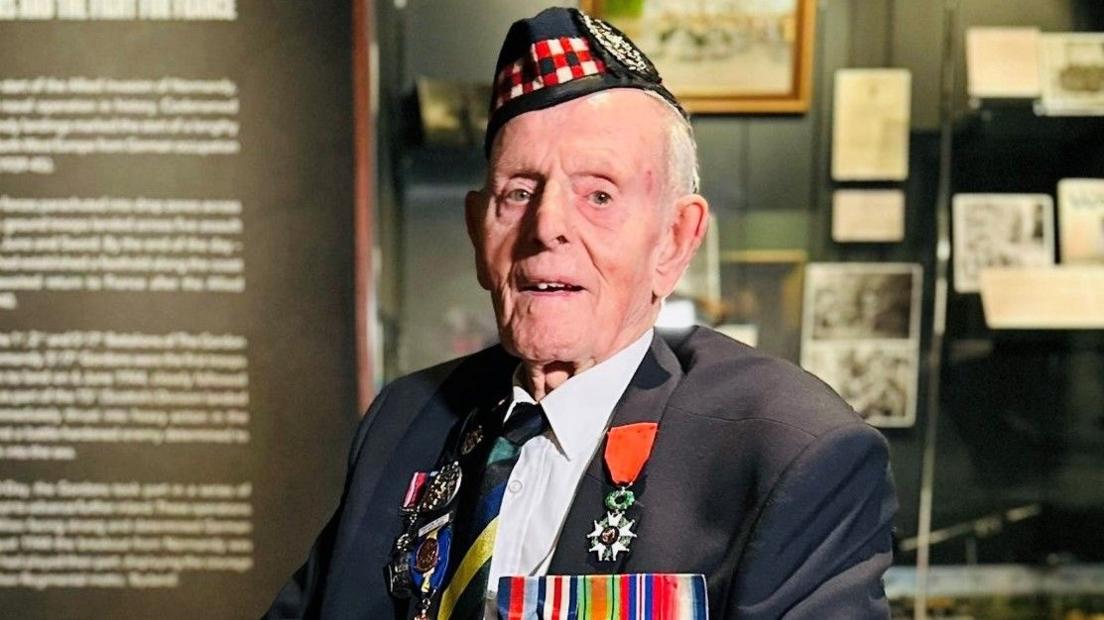The families who gave up homes for D-Day rehearsals

Meg Anderson's parents moved out of their farm for six months during D-Day rehearsals in Moray
- Published
In late 1943, families on a stretch of the Moray coast were ordered to evacuate their homes to make way for secret rehearsals for World War Two's D-Day.
They got short notice to pack up and move out, only in the knowledge they were contributing in some way to the war effort.
Meg Anderson's parents were given just weeks to leave their farm near Forres.
Eighty years on, the role played by her family and others in Moray in preparations for the1944 landings in Normandy remains largely unknown.

Parts of the Moray coast were considered to be similar to a beach in Normandy
It was October 1943 when three men from the British Admiralty turned up at Ms Anderson's family home.
They had instructions the farm was to be vacated.
"Everything had to be sold and they had to find somewhere else to live," says Ms Anderson.
"There was sugar beet still in the fields that had to be harvested, and barley and oats that had to be thrashed and sold.
"Everything had to be cleared in three weeks."
What were the D-Day landings?
- Published6 June 2024
D-Day's 'forgotten' sand samplers
- Published6 June 2012
Ms Anderson's family were helped by relatives and neighbours to sell 75 cattle and deal with their crops.
They were allocated 18 prisoners of war to help with the threshing, removing grains of barley and oats from their stalks so the grain could then be sold.
Ms Anderson said the helpers had to be fed, and her granny and aunt toiled in the kitchen making meals.
The three-week deadline was met, and the family moved into a cottage a few miles away.
It would be six months before they could return.
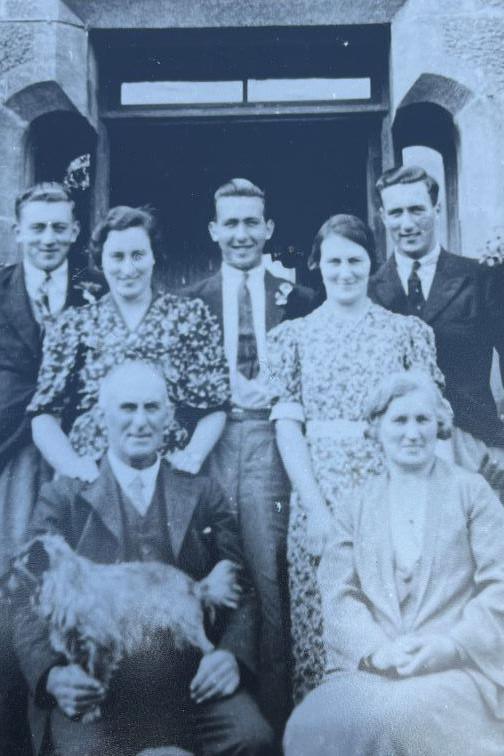
Meg Anderson's family
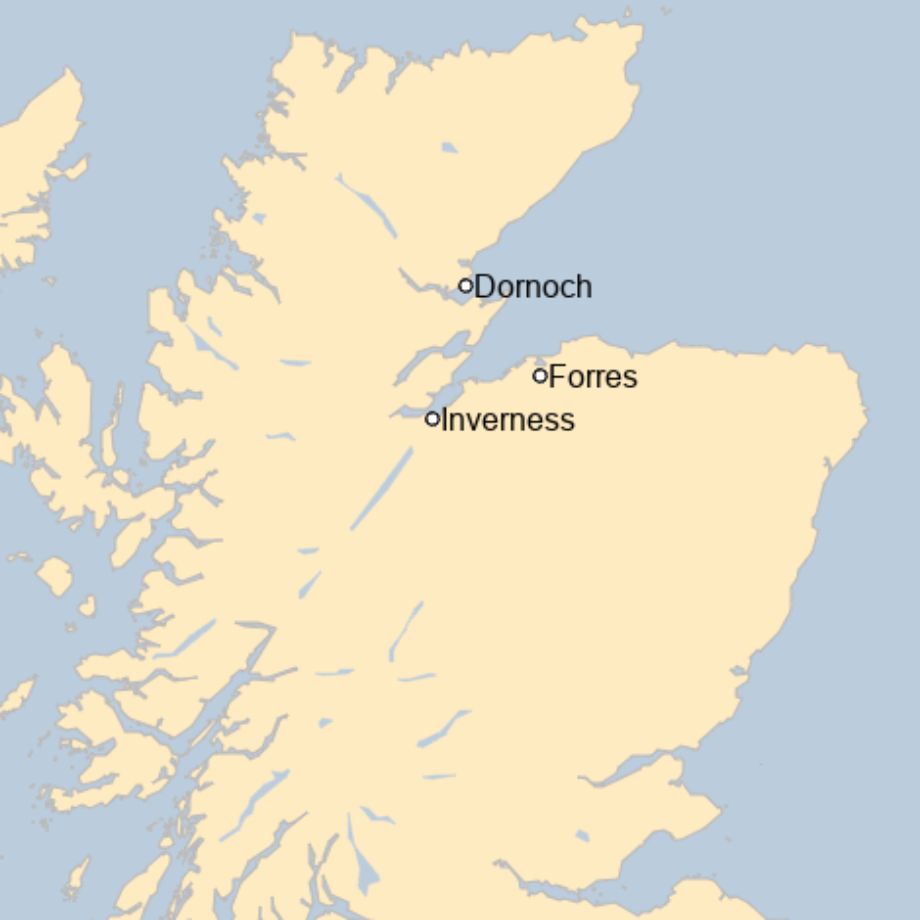
Ms Anderson said they would have moved willingly.
She said: "I think they realised what they were being asked to do was for a good reason, and it was going to be their share of the war effort."
Writing years later, her aunt Rita Taylor recalled the sights and sounds of the training on the nearby coast.
She wrote: "Some days, the whole area seemed to be on fire, and the noise was frightening, but of course we were much more fortunate than the many people on the continent who didn't know if they would ever see their homes again.
"We were confident we would get back to ours."
Ms Anderson said the secrecy around the training had a long lasting effect, and she believes little is still known about it today.
"It was a long, long time before people started talking about this."
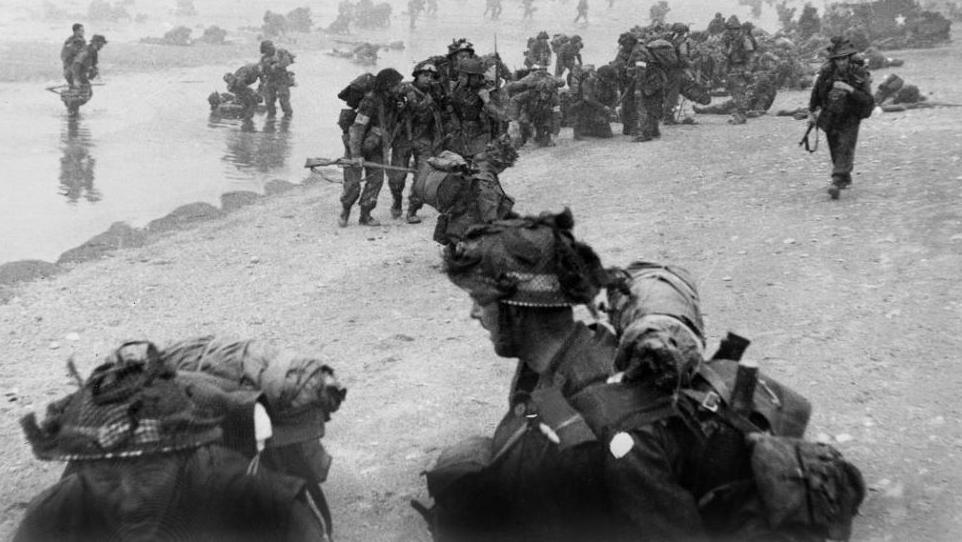
The Normandy landings happened 80 years ago
Maj Gen Seymour Monro, Lord Lieutenant of Moray and a former head of the UK infantry, said Moray beaches was chosen because of their similarities with an area of Normandy codenamed Sword beach - the target of a D-Day amphibious assault.
During the training, troops were stationed at Fort George barracks near Inverness and the ships moored off Dornoch.
Maj Gen Monro said seven full-scale rehearsals were conducted, involving warships, landing craft, tanks and artillery.
He said: "It was January through to April so the weather was awful."
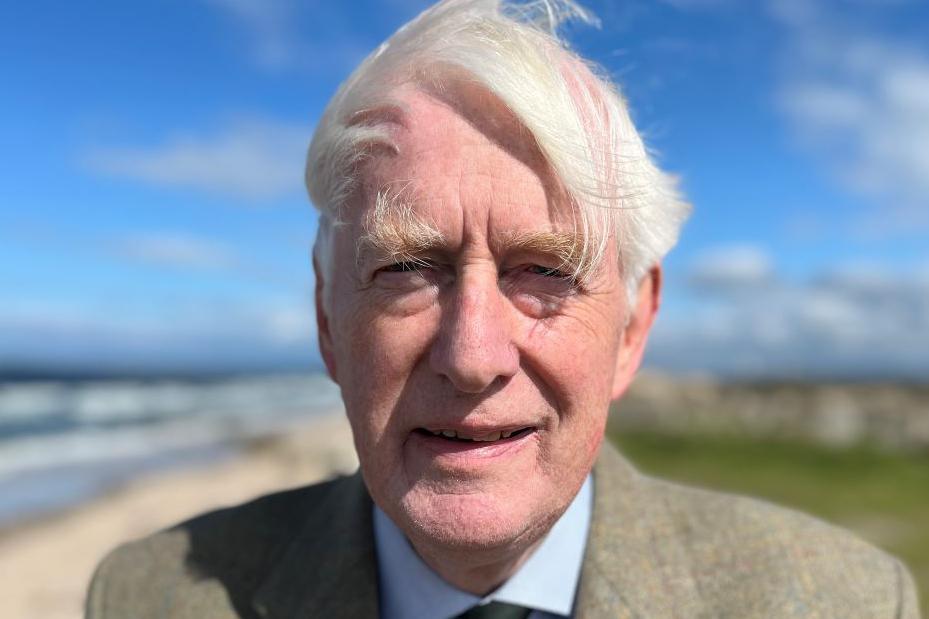
Maj Gen Seymour Monro said families who gave up their homes were "selfless"
One of the exercises was conducted during a force six gale.
In another, a tank driver died after his vehicle sank.
A wreath is to be dropped at the site of the war grave as part of this week's D-Day 80th commemorations.
Maj Gen Monro described people who left their homes to protect the secrecy of the rehearsals as "selfless".
He added: "If the landings in Normandy had not been a success we would have been in trouble.
"If this training had not been carried out so thoroughly there is a good chance the assault on the beaches would not have worked as well as they did.
"Casualties would have been much, much worse if the training had not been carried out here."
- Published5 June 2024
